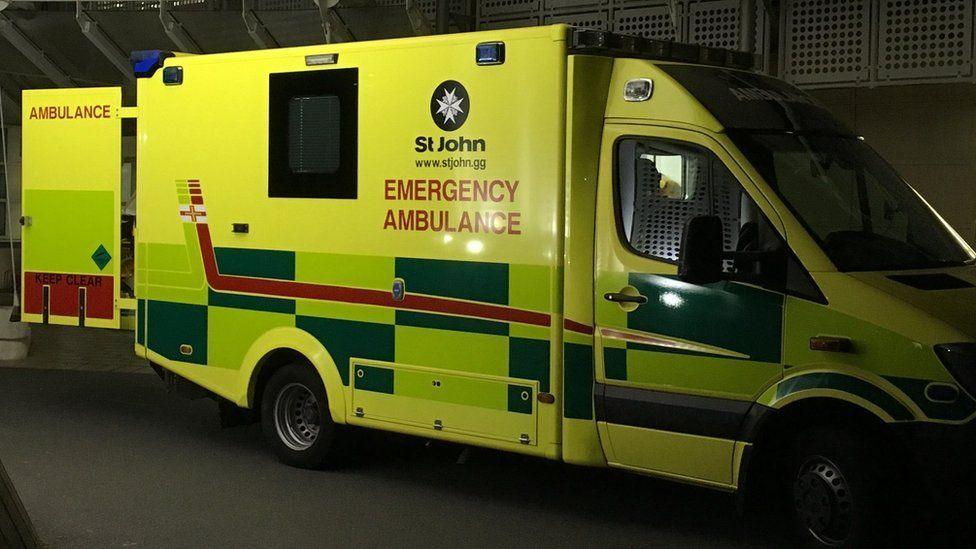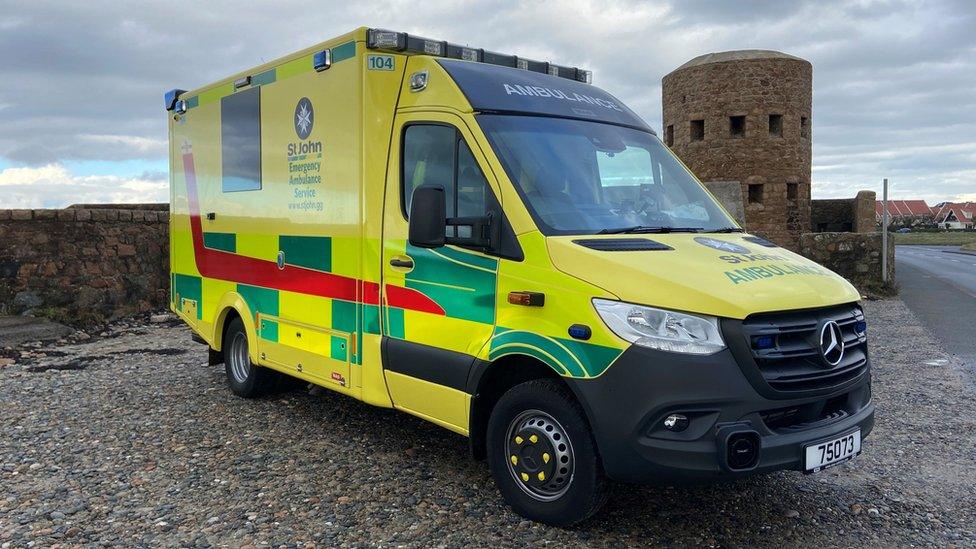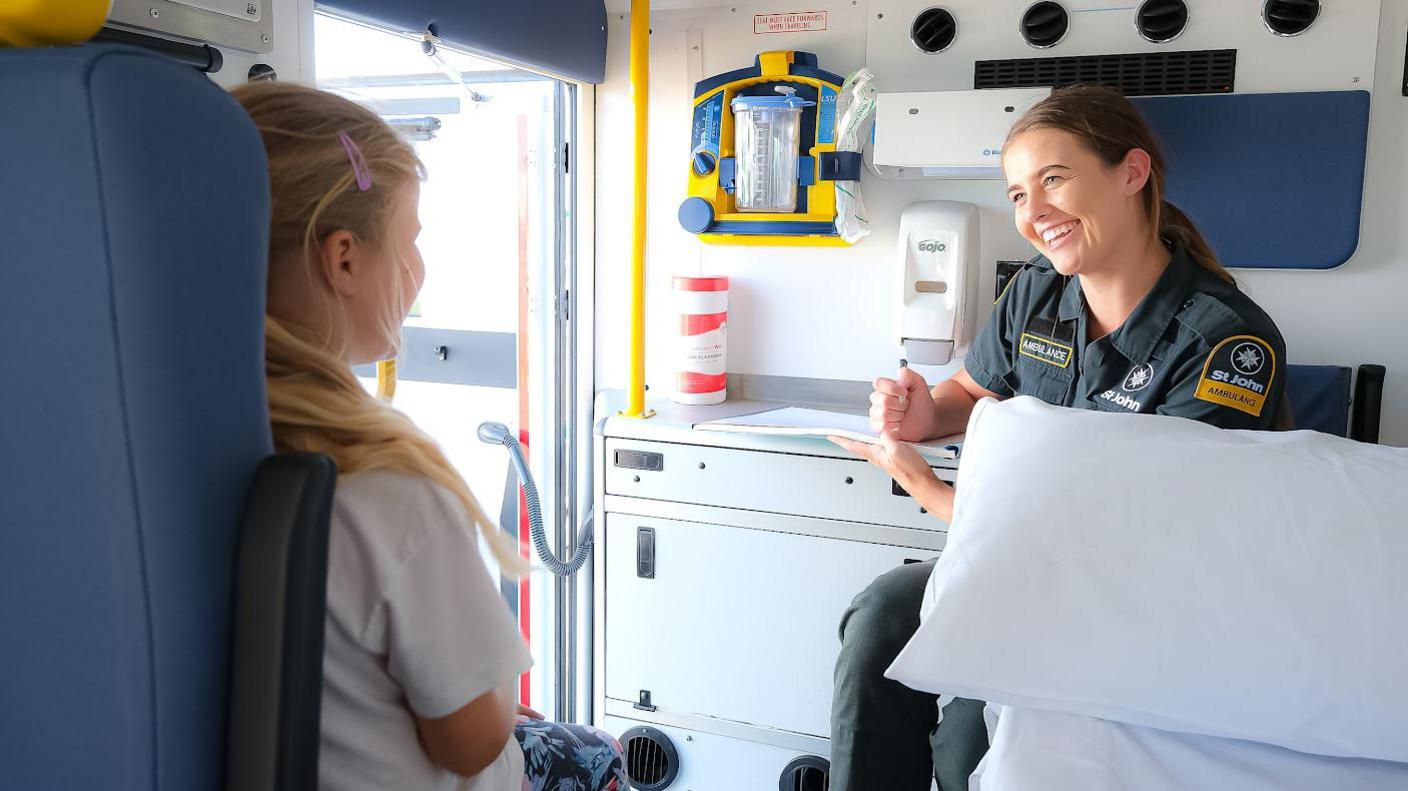Increased ambulance demand prompts changes

The ambulance service has 999 calls triaged to identify immediately those patients in a life-threatening situation
At a glance
Ambulance staff in Guernsey have new procedures to deal with increases in demand
St John Ambulance and Rescue Service said it had seen a 36% rise in calls in five years
It said changes meant that more than a quarter of current call-outs did not need patients being brought to A&E
- Published
New procedures have been put in place to enable ambulance staff in Guernsey to deal with increased demand, bosses say.
St John Ambulance and Rescue Service said it was facing a number of challenges in delivering services.
It said it had seen a 36% rise in the number of emergency and non-urgent calls between 2017 and 2022, with almost 7,000 cases and 3,000 non-emergency patient-transfers in 2022 alone.
The service said changes in working practices meant 27% of patients were now "treated within the community, without the need for conveyance to the emergency department".
Bosses said the service's challenges were similar to other healthcare providers.
They include "sustainability and delivery of services, responding to changes in demographics, increases in complex comorbidities (patients with more than one disease or condition) and meeting rising healthcare expectations".
It said medical prioritisation and a triage system for 999 calls meant "life-threatening calls are identified immediately" and responded to, and less urgent calls received "the most appropriate clinical response".
It also said it got twice daily status updates about capacity at the Princess Elizabeth Hospital, "which enables us as partners to plan our resources".
Follow BBC Guernsey on Twitter, external and Facebook, external. Send your story ideas to channel.islands@bbc.co.uk, external.
Related topics
Related internet links
- Published6 March 2023

- Published15 August 2023
